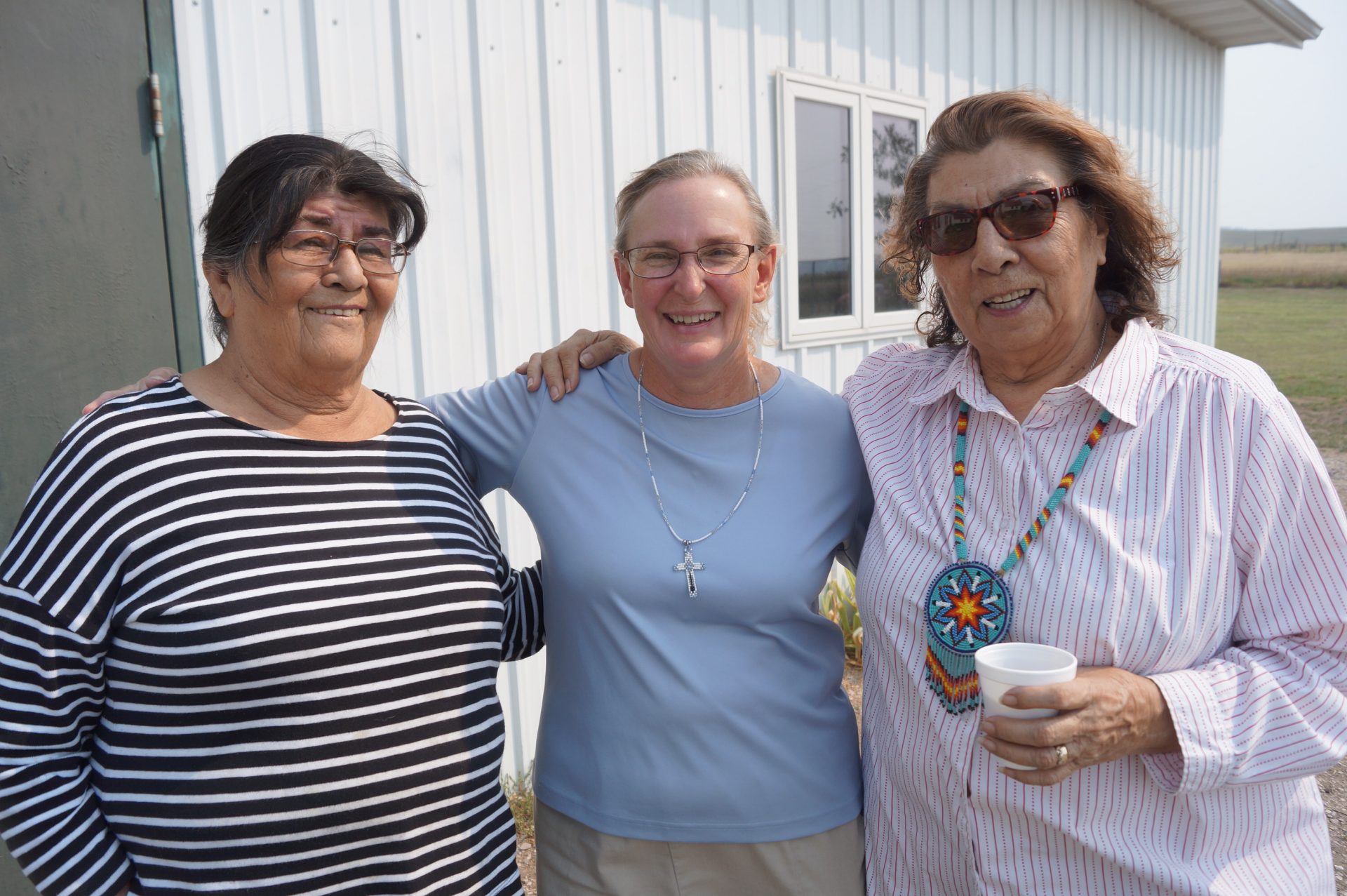
Elizabeth Garnier-Little is an 80 years-wise Lakota woman born and raised on the Pine Ridge Indian Reservation in Oglala, South Dakota. A teacher of all grades K-12 for 52 years, she now substitutes frequently in the Oelrichs, S.D., public school. She is a parishioner at Our Lady of the Sioux where Sister Barbara Ann Bogenschutz ministers. Liz says she doesn’t remember when she was not eager to learn the culture, traditions, and experiences of her ancestors. I asked what her ancestral traditions might teach us today about our obligation and capacity to repair Earth as we navigate climate-changing pollution, ongoing threats from nuclear armaments and waste, and the social dissolution we are now experiencing in the U.S. and globally. This is a paraphrased summary of her response.
Live by virtue. The Lakota culture is more than food, language, clothes and storytelling. It includes the virtues of prayer, respect, caring, honesty, generosity, humility, wisdom, and love. For the Lakota people, love is the foundation for our spirituality. Love and respect are to be shown everyone, regardless of who you are or what you do. One clear example of these virtues in action was the way Native Americans welcomed Europeans by introducing them to corn and teaching them how to hunt and survive through the harsh winter.
Dwell within the web of creation. We had no religion per se but possessed a spirituality based on the belief that everything is connected. The sun, moon, earth, stars, plants, animals, and people are all in relationship together, each with its unique spirit. The rivers, streams, trees, rocks, and all created things have their own spirit.
The Great Spirit, who is above all and the one from whom all strength and power flows, is represented in Lakota spirituality by the Sacred Circle. The Great Spirit created the universe and enumerates it by the sacred number four: four races of people (red, yellow, black and white), four seasons, four winds, four directions. It is a common belief that everything which is good and holy is symbolized by the shape of a circle representing the interconnectedness of all things and their continued development. This Sacred Circle or Medicine Wheel connects all facets of human and animal life. Knowledge concerning the earth’s compass, the seasons, life stages, and animals are learned from it.
Use only what is needed for life. My ancestors lived in the present moment, taking from Mother Earth only what was necessary for survival. A buffalo would be utilized in providing food, clothing, shelter and tools with nothing wasted. They lived unencumbered without a lot of belongings. Buffalo hide tipis were easily and quickly dismantled and ready to travel where the Great Spirit would lead them.
Mother Earth’s rivers and streams provided mineral rich water for good health and cleanliness. The rain and snow cleansed our homes. Our deep respect for this life-giving resource kept it from becoming a dumping ground for pollutants and waste as we dwelled close by.
Recognize the necessity of caring for the common good. The virtues of respect and caring for all things and living beings influenced our actions toward others. When needing to cross over onto another’s territory it was done quietly in order not to disturb or cause any difficulty with anyone.
An innate sense of taking care of and providing for another is embedded in the heart of the Lakotas. It is common for more than one family to live in the same dwelling where all are cared for according to their need. Each day 10 to 15 people will gather to share a meal following the premise that if you keep a bowl of food it will spoil thus we share what we have.
Love one another. Love is meant to be the motivating force behind all our actions and decisions.
The world owes a debt of gratitude to members of Liz’s tribe and dozens of other indigenous communities whose personal and communal sacrifices on behalf of the repair of Mother Earth are making a positive impact. A report released in August by the Indigenous Environmental Network and the research group Oil Change International demonstrates that during the past 10 years direct action against 21 North American fossil fuel projects by indigenous peoples of North America has stopped or delayed greenhouse gas pollution equal to the amount that would be released into the atmosphere if 400 new fossil fuel power plants were brought on line. That is equivalent to 25% of yearly carbon emissions released by the United States and Canada combined. You can read the report at https://www.ienearth.org.
This article was originally published in the Fall 2021 Edition of JUST Words and written by Sister Geraldine Kemper, OP. Sister Geraldine is Community and Parish Outreach Coordinator for Rosary High School, Aurora, Ill., and a member of the JUST Words editorial board.

